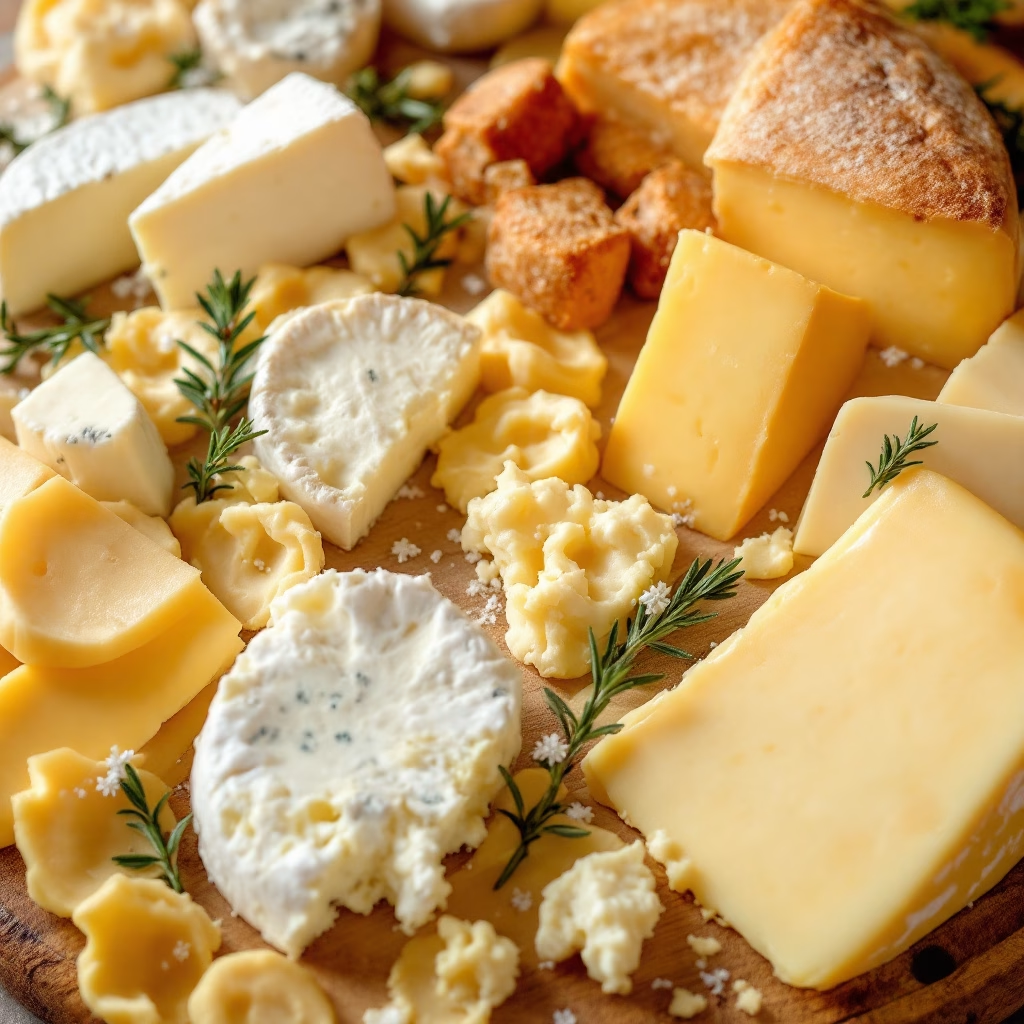Today’s market churned out some surprises. Butter’s on a slippery slope, cheese is holding steady (for now), and global trade winds are blowing in some stormy forecasts. From Mexican tariff threats to New Zealand’s milk tsunami, we’ve got the scoop on what’s moving markets. Ready to dive in?
Summary:
Alright, let’s break down today’s dairy market action! Butter took a hit, sliding 1.75¢ to $2.4225/lb as global competition, especially from the EU, put the squeeze on. Cheese markets were a mixed bag – blocks inched up 0.25¢, hanging tough on steady pizza demand, but barrels stumbled 2.25¢ as traders got jittery over Mexico’s potential 25% tariff. NDM dropped 2¢, feeling the heat from weak Asian demand. The big story? USDA trimmed its milk production forecast, citing smaller herds, while feed costs are doing the cha-cha – corn’s up, soybean meal’s down. Class III futures settled at $19.14/cwt, reflecting a cautious outlook. Oh, and keep an eye on New Zealand – they’re flooding the market with milk (+3% year-over-year) and cozying up to Vietnam with a new trade deal. Bottom line: It’s a wild ride out there, folks. Hedge wisely, and maybe consider Central American exports to offset that Mexican curveball!
Key Takeaways:
- Butter prices declined 1.75¢ to $2.4225/lb, pressured by global competition and EU exports.
- Cheese markets split: blocks up 0.25¢, barrels down 2.25¢ on Mexico tariff concerns.
- NDM fell 2¢ due to weak Asian demand.
- USDA lowered its 2025 milk production forecast by 0.3B lbs, citing smaller herd sizes.
- Feed costs mixed: Corn futures rose 2.1% week-over-week, while soybean meal dipped 0.8%.
- Class III milk futures for March settled at $19.14/cwt, reflecting cautious market sentiment.
- Mexico’s proposed 25% tariffs on U.S. cheese significantly threaten exports.
- New Zealand’s milk production surged 3% year-over-year, intensifying global competition.
- Traders recommend hedging 50% of Q2 cheese production amid tariff uncertainty.
- Analysts suggest exploring Central American markets to diversify export risks.
- Overall market sentiment is neutral to bearish as traders await tariff resolutions and Q1 export data.

Butter Prices Slide on Export Uncertainty; Cheese Markets Hold Steady Amid Mixed Trading Activity
Key Price Changes & Market Trends
| Product | Closing Price | Change from Yesterday |
| Cheese (Blocks) | $1.9000/lb | +0.25¢ |
| Cheese (Barrels) | $1.7850/lb | -2.25¢ |
| Butter | $2.4225/lb | -1.75¢ |
| Nonfat Dry Milk (NDM) | $1.2500/lb | -2.00¢ |
| Dry Whey | $0.5450/lb | NC |
Commentary:
- Cheese blocks edged up 0.25¢ on light bidding interest, supported by steady domestic demand for pizza and processed cheese.
- Cheese barrels fell 2.25¢ as traders priced in potential disruptions from Mexico’s proposed 25% retaliatory tariffs on U.S. dairy[6][9].
- Butter declined 1.75¢ amid softening global demand and concerns over EU export competition[6].
- NDM dropped 2.00¢ due to weaker international buying interest, particularly in Southeast Asia.
Volume and Trading Activity
- Butter saw moderate activity with six trades executed, though offers outnumbered bids 4-to-1.
- Cheese blocks had three trades with a narrow bid/ask spread, signaling cautious optimism.
- Dry whey remained untraded, reflecting stagnant global demand for protein additives.
Global Context
- Mexico Tariff Threat: Proposed 20-25% tariffs on U.S. cheese (25% of total exports) pressured barrel prices.
- New Zealand Competition: Record milk production (+3% YoY) and a new trade deal with Vietnam intensified competition in Asian markets.
- EU-Japan Trade Agreement: European butter and cheese gained tariff advantages in Japan, weakening U.S. export prospects.
Forecasts and Analysis
| Metric | Current Value | USDA Forecast (2025) |
| All-Milk Price | $23.05/cwt | $22.60/cwt[5][8] |
| Class III Milk Price | $19.15/cwt | $19.10/cwt[8] |
| Corn (Dec Futures) | $4.7875/bu | $4.70–$4.90/bu |
Analysis:
- Due to smaller herd sizes, the USDA revised its 2025 milk production forecast downward by 0.3B lbs.
- Feed costs showed mixed signals: Corn futures rose 2.1% WoW to $4.9750/bu, while soybean meal dipped 0.8%.
- Class III futures for March settled at $19.14/cwt, reflecting bearish sentiment for cheese markets.
Market Sentiment
- Trader Insight: “If Mexico finalizes tariffs, cheese markets could face a 10-15% correction by March,”noted a CME floor broker.
- Analyst View: “Butter’s rally last week was unsustainable—today’s pullback aligns with global oversupply trends,” stated CoBank’s Corey Geiger.
- Overall: Neutral-to-bearish sentiment prevails as traders await tariff resolutions and Q1 export data.
Closing Summary & Recommendations
Summary: Butter and NDM faced headwinds from global oversupply and trade risks, while cheese markets stabilized on domestic demand. Feed cost volatility and Mexico’s tariff threats dominate short-term risks.
Recommendations:
- Hedge Cheese Exposure: Lock in prices for 50% of Q2 production amid tariff uncertainty.
- Monitor Corn Futures: Pre-book 30% of Q3 feed needs if December corn dips below $4.70/bu.
- Diversify Exports: Explore Central American markets under CAFTA-DR to offset Mexican risks.
Learn more:
- CME Dairy Market Report February 13, 2025: Mixed Signals Amid Global Shifts
- USDA Forecasts Tighter Milk Supply, Price Shifts in Latest WASDE Report
- Global Dairy Market Dynamics: Navigating Volatility and Strategic Opportunities in 2025
 Join the Revolution!
Join the Revolution!
Bullvine Daily is your essential e-zine for staying ahead in the dairy industry. With over 30,000 subscribers, we bring you the week’s top news, helping you manage tasks efficiently. Stay informed about milk production, tech adoption, and more, so you can concentrate on your dairy operations.







 Join the Revolution!
Join the Revolution!







